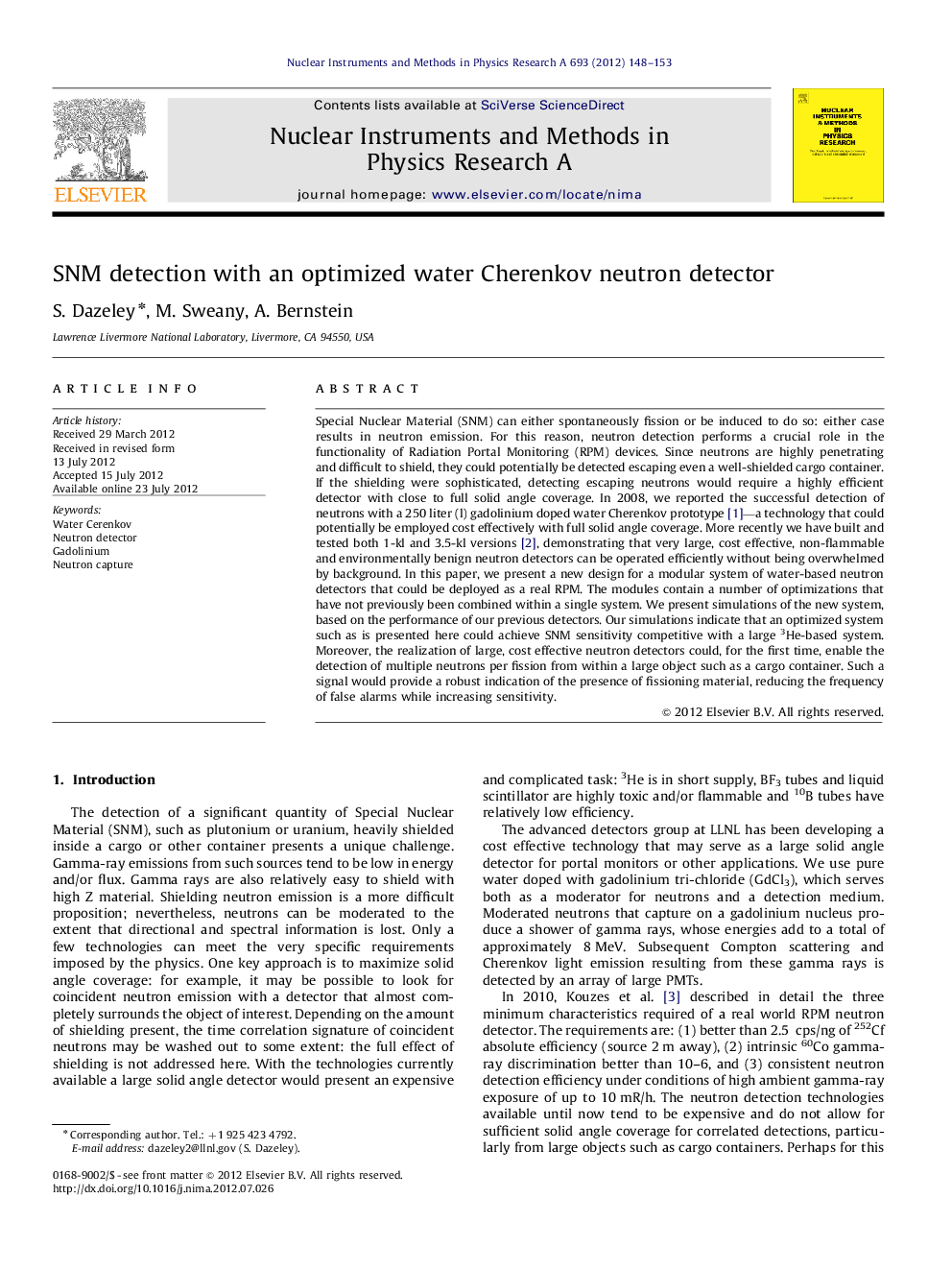| Article ID | Journal | Published Year | Pages | File Type |
|---|---|---|---|---|
| 1823520 | Nuclear Instruments and Methods in Physics Research Section A: Accelerators, Spectrometers, Detectors and Associated Equipment | 2012 | 6 Pages |
Special Nuclear Material (SNM) can either spontaneously fission or be induced to do so: either case results in neutron emission. For this reason, neutron detection performs a crucial role in the functionality of Radiation Portal Monitoring (RPM) devices. Since neutrons are highly penetrating and difficult to shield, they could potentially be detected escaping even a well-shielded cargo container. If the shielding were sophisticated, detecting escaping neutrons would require a highly efficient detector with close to full solid angle coverage. In 2008, we reported the successful detection of neutrons with a 250 liter (l) gadolinium doped water Cherenkov prototype [1]—a technology that could potentially be employed cost effectively with full solid angle coverage. More recently we have built and tested both 1-kl and 3.5-kl versions [2], demonstrating that very large, cost effective, non-flammable and environmentally benign neutron detectors can be operated efficiently without being overwhelmed by background. In this paper, we present a new design for a modular system of water-based neutron detectors that could be deployed as a real RPM. The modules contain a number of optimizations that have not previously been combined within a single system. We present simulations of the new system, based on the performance of our previous detectors. Our simulations indicate that an optimized system such as is presented here could achieve SNM sensitivity competitive with a large 3He-based system. Moreover, the realization of large, cost effective neutron detectors could, for the first time, enable the detection of multiple neutrons per fission from within a large object such as a cargo container. Such a signal would provide a robust indication of the presence of fissioning material, reducing the frequency of false alarms while increasing sensitivity.
